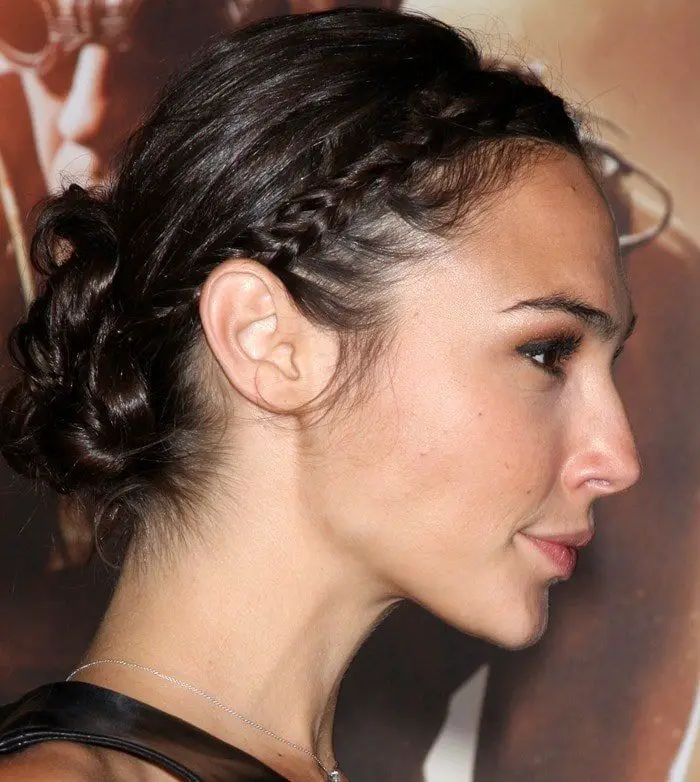The aquiline nose, also known as the Roman nose, is a distinctive and striking facial feature that has captivated people for centuries. Characterized by a prominent and curved shape, this nose type exudes elegance, strength, and a sense of individuality. In this comprehensive guide, we will explore the history, genetics, cultural significance, and cosmetic considerations associated with the aquiline nose. Whether you have an aquiline nose yourself or are simply fascinated by this feature, join us as we delve into the world of one of the most captivating facial attributes.

An Overview of the Aquiline Nose
Defining the Aquiline Nose
The aquiline nose is typically characterized by its prominent bridge and a distinct curve or hook at the tip. It often features a convex or slightly concave profile, giving the nose a regal and refined appearance. This unique shape sets it apart from other nose types and makes it instantly recognizable.
The Genetic Factors at Play
The aquiline nose is believed to have genetic origins. It is thought to be inherited as a dominant trait, meaning that if one of your parents has an aquiline nose, there is a higher likelihood of you having one as well. However, it’s important to note that nose shape is influenced by multiple genes, and the expression of these genes can vary among individuals.
Historical and Cultural Significance
Throughout history, the aquiline nose has been associated with power, leadership, and beauty. From ancient civilizations to modern times, individuals with aquiline noses have often been admired and considered to possess strong and charismatic personalities. We will explore the historical significance of the aquiline nose in various cultures, including ancient Egypt, Greece, and Rome.
The Aquiline Nose and Facial Harmony
The Role of Facial Proportions
Facial harmony is a key aspect of beauty, and the aquiline nose can play a significant role in achieving this balance. We will delve into the concept of facial proportions and discuss how the aquiline nose can complement and enhance the overall aesthetic of the face. Additionally, we will explore the impact of the aquiline nose on other facial features, such as the eyes, lips, and chin.
Cultural Perceptions of Beauty
Beauty standards vary across different cultures and time periods. We will examine how the perception of the aquiline nose has evolved over time and explore its representation in art, literature, and popular culture. From statues of ancient gods to iconic portraits, the aquiline nose has been celebrated as a symbol of beauty and distinction.
Embracing the Aquiline Nose: Confidence and Self-Acceptance
Building Self-Confidence
If you have an aquiline nose, it’s essential to embrace and celebrate this unique feature. We will provide tips and advice on building self-confidence and learning to love your aquiline nose. From positive affirmations to seeking support from like-minded individuals, there are numerous strategies to help you feel proud and self-assured.
Makeup and Styling Tips
Makeup and styling techniques can enhance your natural beauty and draw attention to your aquiline nose. We will share expert advice on contouring, highlighting, and choosing hairstyles that complement the aquiline nose. By understanding the interplay between makeup, styling, and facial features, you can create a look that accentuates your unique attributes.
Cosmetic Considerations
For those who desire to alter or refine their aquiline nose, cosmetic procedures may be an option. We will explore the various surgical and non-surgical interventions available, such as rhinoplasty and dermal fillers. It’s important to approach any cosmetic procedure with careful consideration and consultation with a qualified healthcare professional.
Celebrating Diversity: Different Nose Types and Beauty

Exploring Nose Diversity
The aquiline nose is just one of many nose types that exist across the globe. We will take a closer look at other prominent nose shapes, such as the snub nose, the button nose, and the Greek nose. By celebrating the diversity of nose shapes, we can challenge traditional beauty standards and promote inclusivity.
Beauty Beyond Appearance
While physical attributes play a role in our perception of beauty, true beauty encompasses much more than external features. We will delve into the importance of inner beauty, self-acceptance, and embracing individuality. By promoting a holistic approach to beauty, we can foster a more inclusive and positive mindset.
Conclusion
The aquiline nose is a captivating facial feature that has fascinated people throughout history. Its unique shape and prominence have made it an enduring symbol of beauty, strength, and individuality. Whether you possess an aquiline nose or simply appreciate its aesthetic appeal, understanding its history, genetics, and cultural significance can deepen your appreciation for this striking facial attribute. By embracing diversity and celebrating individuality, we can redefine beauty standards and promote a more inclusive and accepting society.
Recommended for you:
An intriguing exploration of the Greek nose Th...
Everyone desires to have healthy and glowing skin...
A button nose is a term commonly used to describe...
Doe eyes are a term used to describe a particular...
Do you want to level up physically in 2024? I...
The eyes are one of evolution's most amazing crea...

